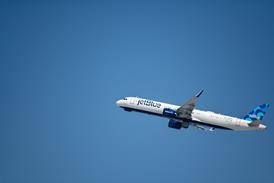The National Business Aviation Association says a cost-benefit analysis that would appear to support a night-time curfew proposed for the Bob Hope Airport in Burbank, California is fatally flawed.
The rebuke is the latest chapter in NBAA's efforts to preserve access to three southern California airports - Burbank, Van Nuys and Santa Monica - all of which are attempting to cut noise for neighbouring communities through various means. Along with general aviation and corporate flights, Bob Hope hosts commercial carriers including Southwest Airlines and JetBlue.
The analysis, developed by Jacobs Consultancy for the Burbank-Glendale-Pasadena Airport Authority, is the centrepiece of the airport's formal effort to deploy a 22:00 to 06:59 curfew of most operations via the US Federal Aviation Administration's Part 161 process. Not included in the mandatory curfew would be law enforcement, military and emergency flight operations.
There would also a one-hour "grace period" from 22:00 to 23:00 for aircraft delayed due to weather, mechanical or air traffic control effects.
According to the Jacobs report, the curfew would cost the airport $55 million through to 2015, an amount largely borne by the air cargo carriers who would have to leave the airport.
Benefits over the period amount to $67 million, says Jacobs, largely from savings made by not having to soundproof adjacent neighbourhoods and by increases in the values of homes. A favourable cost-benefit case is one of six statutory conditions the airport authority must present to make its case to the FAA.
The NBAA in formal comments for the Part 161 study, however, says the noise boundary around the airport is actually shrinking in contrast to Jacobs' assertion that commercial activity there will triple by 2015, accompanied by a substantial increase in very light jet traffic, primarily at night.
"This is the stuff of pure fantasy," NBAA attorney Frank Costello writes of the traffic outlook in the 13 June letter, the final day for comments on the Part 161 application.
NBAA, which has four members based at the airport, hired transportation economics firm GRA to review the report. "With all respect, the Jacobs study has all the earmarks of a work that has been reverse-engineered, starting with the desired result and working backwards," says Costello.
Source: Flight International




















